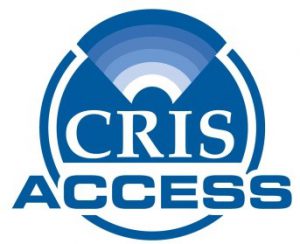Local Foundation Receives Major Grant to Expand Suicide-Prevention Program Nationally
/The Hartford-based Jordan Porco Foundation has been selected as one of 13 non-profit organizations to receive a $100,000 grant from the Alkermes Inspiration Grants program. The grant will support Fresh Check Day, which is an uplifting mental health fair that builds a campus community around mental health and suicide prevention through engaging peer-to-peer education.
Fresh Check Day, the foundation’s signature program, creates an approachable atmosphere where students are encouraged to engage in dialogues about mental health, and it helps to build a bridge between students and the mental health resources that exist on campus, in the community, and on a national level. Research supports that peer-to-peer education is one of the most effective ways to educate students, especially when the subject is suicide and mental health.
Since the first event in 2012, Fresh Check Day has grown exponentially, expanding throughout Connecticut, New England and nationwide. There are now 26 colleges and universities in Connecticut that offer the program, and nearly 150 schools in 37 states.
“We are thankful to be awarded this grant in support of our signature program, Fresh Check Day. It helps in our national expansion and efforts to reach more young adults with our critical message of hope,” said Marisa Giarnella-Porco, President and CEO of the Jordan Porco Foundation.
 The mission of the Jordan Porco Foundation, a 501(c) (3) public charity, is to prevent suicide, promote mental health, and create a message of hope for young adults. They accomplish this by providing engaging and uplifting peer-run programs. Their programs strive to start a conversation about mental health that reduces stigma while encouraging help-seeking and supportive behaviors.
The mission of the Jordan Porco Foundation, a 501(c) (3) public charity, is to prevent suicide, promote mental health, and create a message of hope for young adults. They accomplish this by providing engaging and uplifting peer-run programs. Their programs strive to start a conversation about mental health that reduces stigma while encouraging help-seeking and supportive behaviors.
“Addiction and mental illness affect millions of people and their families every day, and require an integrated approach to treatment that is scalable in communities across the country,” said Richard Pops, Chief Executive Officer of Alkermes. “Medicines play a role, but importantly, it is the innovative programs, like the Jordan Porco Foundation, designed to support people affected by these diseases and led by passionate leaders on the front lines that will ignite sustainable and meaningful change for patients.”
The primary goals of Fresh Check Day are to:
- Increase awareness of mental health resources and services available to students
- Challenge stigma and misconceptions around mental health and suicide that often deter individuals from seeking help
- Empower peers to be gatekeepers by understanding warning signs and knowing what to do if a friend is exhibiting signs of suicide or a mental health concern
- Increase willingness to ask for help if experiencing emotional distress
Now in its second year, Alkermes Inspiration Grants focuses on two key areas: improving or enhancing support or resources for people affected by mental health concerns or substance use disorder, and/or integrating the perspective of people affected by mental health concerns or addiction into drug development or care delivery. Alkermes is a global biopharmaceutical company with a “steadfast commitment” to developing innovative medicines for central nervous system (CNS) diseases. The company has facilities in Ireland and the United States.
https://youtu.be/z_AQ5LJgVnQ


 The article points out that “the connection between climate change and hurricanes has become hard for anyone to ignore.”
The article points out that “the connection between climate change and hurricanes has become hard for anyone to ignore.”




 On the Southern Connecticut State University Owls, a Division ll men’s basketball team, five Connecticut student- athletes have made their way onto the 13 player
On the Southern Connecticut State University Owls, a Division ll men’s basketball team, five Connecticut student- athletes have made their way onto the 13 player 
 I am not a hunger expert. Yes, I have access to research and information which helps us understand the nature of food insecurity in our communities. But the real experts are the people who are living this reality every day - our neighbors who have great resilience and find creative ways to stretch their budgets. Like the seniors on fixed incomes who wait in line, sometimes in the rain and snow, to get a bag of healthy food from our mobile pantry; working parents who still can’t make ends meet and skip meals so their kids can eat; and households that have had an unexpected job loss or medical emergency and suddenly can’t afford to put food on the table. These are the experts we can learn from.
I am not a hunger expert. Yes, I have access to research and information which helps us understand the nature of food insecurity in our communities. But the real experts are the people who are living this reality every day - our neighbors who have great resilience and find creative ways to stretch their budgets. Like the seniors on fixed incomes who wait in line, sometimes in the rain and snow, to get a bag of healthy food from our mobile pantry; working parents who still can’t make ends meet and skip meals so their kids can eat; and households that have had an unexpected job loss or medical emergency and suddenly can’t afford to put food on the table. These are the experts we can learn from.
 Michelle Hargrave, Deputy Director at the NBMAA, said, "The New Britain Museum of American Art is thrilled to partner with CRIS Radio in this endeavor to bring greater accessibility to the institution. The Museum is committed to being a welcoming, dynamic, distinguished, and educationally ambitious art museum, and we are very excited that this opportunity will open our galleries to a broader audience."
Michelle Hargrave, Deputy Director at the NBMAA, said, "The New Britain Museum of American Art is thrilled to partner with CRIS Radio in this endeavor to bring greater accessibility to the institution. The Museum is committed to being a welcoming, dynamic, distinguished, and educationally ambitious art museum, and we are very excited that this opportunity will open our galleries to a broader audience."

 A synthetic turf study was undertaken in 2016 by four United States agencies — EPA, Consumer Products Safety Commission, the Centers for Disease Control and Prevention/Agency for Toxic Substances and Disease Registry — which has yet to be finalized.
A synthetic turf study was undertaken in 2016 by four United States agencies — EPA, Consumer Products Safety Commission, the Centers for Disease Control and Prevention/Agency for Toxic Substances and Disease Registry — which has yet to be finalized. Blumenthal first became concerned about the artificial surface when his children were playing on the crumb-rubber athletic fields. “I became concerned as a parent, as much as a public official, ten years ago, and at first was somewhat skeptical, but now very firmly believe that we need an authoritative, real study about what’s in these fields,” Blumenthal told ABC News two years ago.
Blumenthal first became concerned about the artificial surface when his children were playing on the crumb-rubber athletic fields. “I became concerned as a parent, as much as a public official, ten years ago, and at first was somewhat skeptical, but now very firmly believe that we need an authoritative, real study about what’s in these fields,” Blumenthal told ABC News two years ago.

 Henkel is #158 on Forbes magazine’s Global 2000 list of Top Multinational Performers, and #307 on the list of America’s Best Employers. Charter Communications is #38 on the Forbes list of Growth Champions and ranks #107 on the Global 2000.
Henkel is #158 on Forbes magazine’s Global 2000 list of Top Multinational Performers, and #307 on the list of America’s Best Employers. Charter Communications is #38 on the Forbes list of Growth Champions and ranks #107 on the Global 2000.
 Most Connecticut residents may also be unfamiliar with Charter Communications. Connecticut has 24 cable franchise areas; Charter provides local cable service in only three of them, in the western and northeastern regions of the state for about 35 mostly rural communities. The larger franchise owners in Connecticut are Cablevision, Comcast and Cox. But the Connecticut map is deceiving – nationally Charter is the second largest cable provider in the nation.
Most Connecticut residents may also be unfamiliar with Charter Communications. Connecticut has 24 cable franchise areas; Charter provides local cable service in only three of them, in the western and northeastern regions of the state for about 35 mostly rural communities. The larger franchise owners in Connecticut are Cablevision, Comcast and Cox. But the Connecticut map is deceiving – nationally Charter is the second largest cable provider in the nation.

 Once underway, the new daily service will mean that from New Haven to Hartford, trains will increase from six to 17 per day. Between Hartford and Springfield, trains will increase from six to 12 per day. A new station in North Haven station is currently being designed, and is not due to be built and open until 2020. Stations in Enfield, Newington, West Hartford, Windsor and Windsor Locks stations are also part of the Hartford Line plans. Trains will arrive at stations in New Haven, Wallingford, Meriden, Berlin and Hartford every 45 minutes during peak hours and every 60 to 90 minutes during off-peak periods.
Once underway, the new daily service will mean that from New Haven to Hartford, trains will increase from six to 17 per day. Between Hartford and Springfield, trains will increase from six to 12 per day. A new station in North Haven station is currently being designed, and is not due to be built and open until 2020. Stations in Enfield, Newington, West Hartford, Windsor and Windsor Locks stations are also part of the Hartford Line plans. Trains will arrive at stations in New Haven, Wallingford, Meriden, Berlin and Hartford every 45 minutes during peak hours and every 60 to 90 minutes during off-peak periods.


























